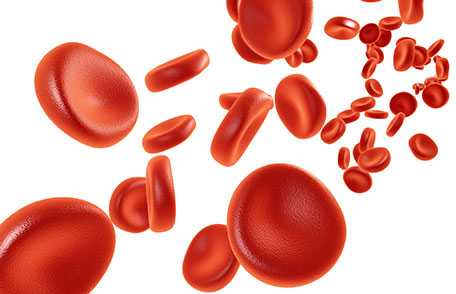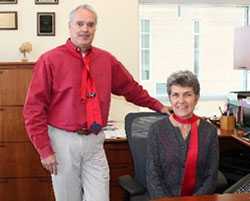Do you know about bleeding disorders?
 Learn how you can support people with bleeding disorders.
Learn how you can support people with bleeding disorders.
Leadership from the Centers for Disease Control and Prevention’s National Center on Birth Defects and Developmental Disabilities and the Division of Blood Disorders donned red ties in a show of support for the second annual Bleeding Disorders Awareness Month™.
“Bleeding Disorders Awareness Month,” expands upon the event designated by President Ronald Reagan over 30 years ago as “Hemophilia Awareness Month.” This special month aims to bring together people with all inherited (conditions that run in families) bleeding disorders to raise awareness of these rare conditions and their potential health problems.
What are bleeding disorders and how many people are affected by them?
The bleeding disorders community includes more than three million Americans who have hemophilia, von Willebrand disease, and other rare bleeding disorders (called rare factor deficiencies). All of these conditions prevent the blood from clotting the way that it should, which can lead to prolonged bleeding after injury, surgery, or physical trauma. They can even be deadly if not treated correctly.

CDC leaders donned red ties in support of people with bleeding disorders.
What is the Red Tie Challenge?
The Red Tie Challenge is a movement created by the bleeding disorders community and the National Hemophilia Foundation (NHF) to start a conversation about inherited bleeding disorders and support Bleeding Disorders Awareness Month. The red tie is a symbol of the blood ties that bind over 3 million Americans together.
Where can you find more information on the Red Tie Challenge and how to get involved?
For more information on the Red Tie Challenge visit redtiechallenge.org which serves as the Red Tie Challenge movement’s official home on the Internet. Among other features, it includes an infographic and videos on how to take the challenge, as well as profiles of community members, including Alex Borstein, best known as the voice of “Lois Griffin” on the Family Guy. Alex is a carrier of a genetic alteration that causes hemophilia and she also has a daughter with mild hemophilia.
How else can you help raise awareness of bleeding disorders?
- Visit the National Hemophilia Foundation’s website to change your social media profile picture and Facebook banner.
- Share messages from the Hemophilia Federation of America’s fact-a-day social media campaign on Facebook and learn about additional strategies they suggest for helping to spread bleeding disorders awareness.
- Share our videos on hemophilia and von Willebrand disease, and our Flickr Album containing personal stories of people affected by hemophilia, and the added challenge of having an inhibitor.
- Follow @CDC_NCBDDD and retweet messages about CDC resources available to people with bleeding disorders.
- Visit our webpages on hemophilia, women with bleeding disorders, and von Willebrand disease to learn more about bleeding disorders.
- Page last reviewed: March 13, 2017
- Page last updated: March 13, 2017
- Content source:
- National Center on Birth Defects and Developmental Disabilities, Division of Blood Disorders
- Page maintained by: Office of the Associate Director for Communication, Digital Media Branch, Division of Public Affairs




 ShareCompartir
ShareCompartir